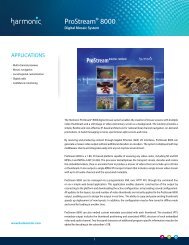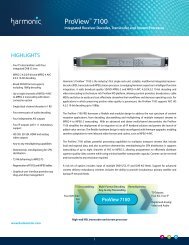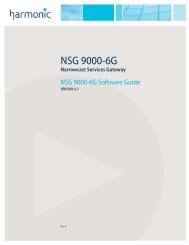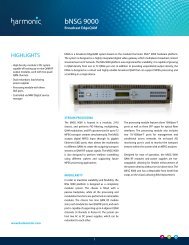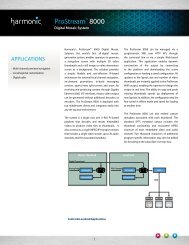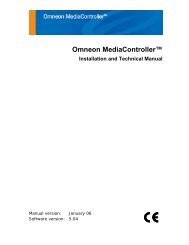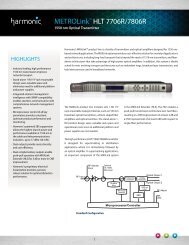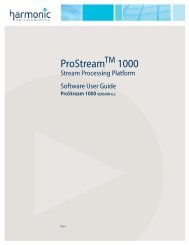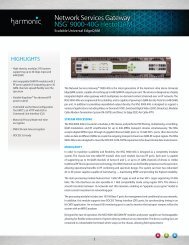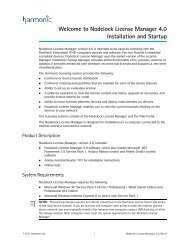About Omneon MediaGrid - Harmonic Inc
About Omneon MediaGrid - Harmonic Inc
About Omneon MediaGrid - Harmonic Inc
You also want an ePaper? Increase the reach of your titles
YUMPU automatically turns print PDFs into web optimized ePapers that Google loves.
System Configuration<br />
If a mount command is issued immediately after loading the omfs module, the command may fail with<br />
an error message indicating, “Some resources could not be allocated, try again later.” Reissue the<br />
mount command later. This message indicates that the omfs module has not completed allocation of<br />
memory after loading.<br />
The Linux FSD does not request any large memory allocations during operation. The memory<br />
allocated at startup must be sufficient to accommodate the file buffer settings. The amount of<br />
memory allocated by the Linux FSD is controlled by the omfs_cache_pre_allocate system control<br />
variable. This parameter can be modified using the following command:<br />
sysctl omfs_cache_pre_allocate=2047<br />
It can also be modified by inserting the following line into the /etc/sysctl.conf file:<br />
omfs_cache_pre_allocate=2047<br />
The value is specified in units of 256KB. The default value is 2047, which is slightly less than 512MB.<br />
On a computer with 1GB RAM there will be 512MB left for other system operations.<br />
The Linux FSD will not release any memory it has acquired. Reducing the<br />
omfs_cache_pre_allocate value after memory has been allocated has no effect. Since the Linux<br />
FSD begins allocating memory as soon as the omfs module is loaded by the Linux kernel, trying to<br />
limit the amount of memory allocated to a value below 512MB using this method produces<br />
inconsistent results.<br />
To limit the memory usage to below 512MB, use the cachePreAllocLimit module load parameter.<br />
For example, when loading the omfs module with the modprobe command use the following format:<br />
modprobe omfs cachePreAllocLimit=40<br />
The example above limits the Linux FSD to using only 10MB for cache memory. This parameter may<br />
also be used in the /etc/modprobe.conf configuration file.<br />
Specifying Buffer Memory for Windows Clients<br />
To configure the amount of memory used for ReadAhead buffering, refer to Setting Windows FSD<br />
Parameters. The memory used is specified in units of slices.<br />
For example, if each slice is 8MB in size, setting ReadAhead=2 would consume 16MB of memory for<br />
each active file. The default value is ReadAhead=3.<br />
To configure the amount of memory used for cache memory limit:<br />
IMPORTANT: The following procedure involves modifying the Windows registry. If you are unsure of the<br />
changes, please contact <strong>Omneon</strong> Technical Support for assistance.<br />
The default limit for the MaximumCacheSize value is four times that of the InitialcacheSize, which is<br />
calculated based on system physical memory size.<br />
1. Start the regedit.exe program. (If the computer does not fully boot, boot in safe mode first).<br />
2. Navigate to the following registry location:<br />
HKEY_LOCAL_MACHINE\SYSTEM\CurrentControlSet\Services\OmRdr\Parameters<br />
3. Create a DWORD value in the above registry key with the name cacheMaxMem.<br />
134 Installation and Configuration Guide



